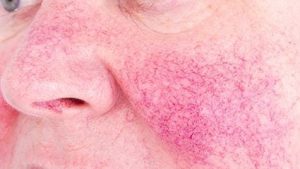One of the world’s best countries for women has a new immigrant education program that has left many observers on the fence. Norway provides voluntary-participation classes in gender relations for male immigrants who may be confused by the state of women’s rights in the Nordic country. Critics say that the program only further stigmatizes the people of color now entering Europe, while others maintain that it is a necessary tool for successful integration.
Anti-immigrant and anti-Muslim organizations throughout the West maintain that violent crime has risen in those countries that have elected to accept immigrants and refugees from war-torn countries in Africa and Asia. According to The New York Times, of the 20 men who were found responsible for a series of rapes in Stavanger between 2009 and 2011 — only three were native Norwegians. Attributing this disproportionate representation of newcomers to cultural factors, Norway created a program designed to do what Western feminists have spent years calling for: teach men not to rape.
I will be the first to admit that reading about these classes left a bad taste in my mouth. The whole idea stinks of white supremacy, right down to the idea that dark-skinned men are savage brutes bent on tearing white women’s purity asunder. To point fingers at men in foreign countries plays right into the arguments of rape apologists, who suggest that Western feminists should focus on the plight of women in third-world countries instead of combating homegrown rape culture.
If we want gender equality for all women, however, we have to be willing to remove the plank from our own eye, so to speak. Rape apologists don’t want that to happen, because it requires us to admit that the West continues to harbor huge economic, social, educational, and political gender gaps. According to the World Economic Forum’s 2014 Global Gender Gap Report, the U.S. and U.K. came in at No. 20 and No. 26, respectively, on the list of best countries for women, while Iceland, Finland, and Norway took the top three spots.
It is much less insidious, then, to offer immigrant education classes in Norway than in the U.S., simply because the Nordic country does not appear to be ignoring domestic violations of women’s rights for the sake of civilizing savages. In the U.S. — where rape-prevention continues to focus on what women can do to avoid being raped — all citizens would benefit from this program, male and female alike.
Why? Because it teaches consent, and the idea that a woman’s worth is innate and not linked to her relationship with a man: e.g. “she’s someone’s daughter/wife/sister.” That’s a huge lesson for a country where nearly 1 million rapes go unreported every year due to abysmal prosecution records and pervasive victim-blaming.
The New York Times interviewed Abdu Osman Kelifa, an Eritrean immigrant enrolled in Norway’s classes. Kelifa admitted that he did not know how to read “signals from women who wear short skirts, smile or simply walk alone at night without an escort.” He drew comparisons between Norwegian women’s everyday behavior and that of “prostitutes” in his home country, where “if someone wants a lady he can just take her and he will not be punished.”
But, thanks to the gender relations program, he understands that things are different in Norway. The classes are a gentle and respectful reminder to newcomers that they are expected to follow the laws of their new country, even if those laws act in opposition to cultural traditions.
Immigrants leave the education program knowing what constitutes domestic violence, child abuse, and consent in Norway. These are revolutionary concepts to individuals from countries where women have no right to bodily autonomy. To teach them seems to be less about protecting white women than protecting the men themselves from violating laws they may not even know exist.
The New York Times does not mention whether or not the classes cover LGBTQIA rights in Norway. Among the newcomers, there are bound to be non-heterosexual and non-cisgender individuals who have lived in fear of being imprisoned for their orientations and identities. They and their families would obviously benefit from knowing that LGBTQIA people have the right to live openly and freely in Norway, where anti-discrimination laws date back to 1981.
Additionally, there is no mention of similar classes being offered for women, to educate them on their new rights and freedoms under Norwegian law. Although I have no doubt that most of the men who attend these programs will embrace the laws and values of their new home, it isn’t beyond the scope of the imagination to suspect that some may be unwilling to let their wives and daughters in on what they’ve learned. The best way to avoid such a situation is to teach immigrant women that Norway values them, and that the law will shield them if they are victimized.

















